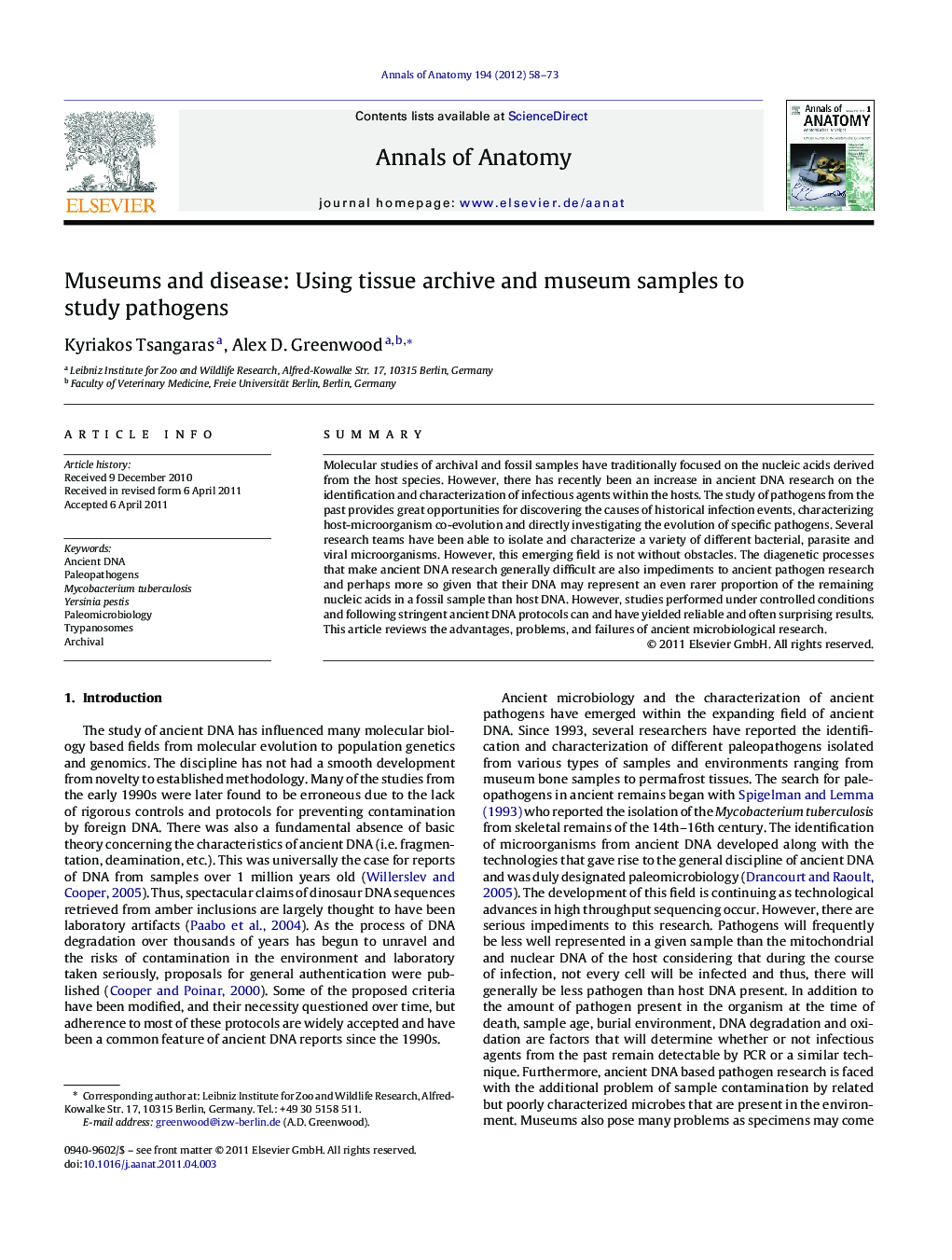| Article ID | Journal | Published Year | Pages | File Type |
|---|---|---|---|---|
| 8461873 | Annals of Anatomy - Anatomischer Anzeiger | 2012 | 16 Pages |
Abstract
Molecular studies of archival and fossil samples have traditionally focused on the nucleic acids derived from the host species. However, there has recently been an increase in ancient DNA research on the identification and characterization of infectious agents within the hosts. The study of pathogens from the past provides great opportunities for discovering the causes of historical infection events, characterizing host-microorganism co-evolution and directly investigating the evolution of specific pathogens. Several research teams have been able to isolate and characterize a variety of different bacterial, parasite and viral microorganisms. However, this emerging field is not without obstacles. The diagenetic processes that make ancient DNA research generally difficult are also impediments to ancient pathogen research and perhaps more so given that their DNA may represent an even rarer proportion of the remaining nucleic acids in a fossil sample than host DNA. However, studies performed under controlled conditions and following stringent ancient DNA protocols can and have yielded reliable and often surprising results. This article reviews the advantages, problems, and failures of ancient microbiological research.
Related Topics
Life Sciences
Biochemistry, Genetics and Molecular Biology
Cell Biology
Authors
Kyriakos Tsangaras, Alex D. Greenwood,
